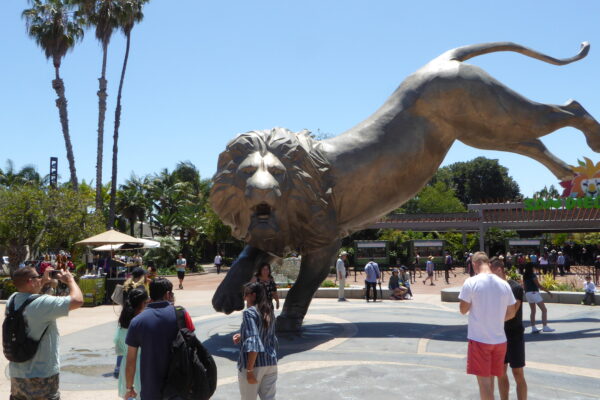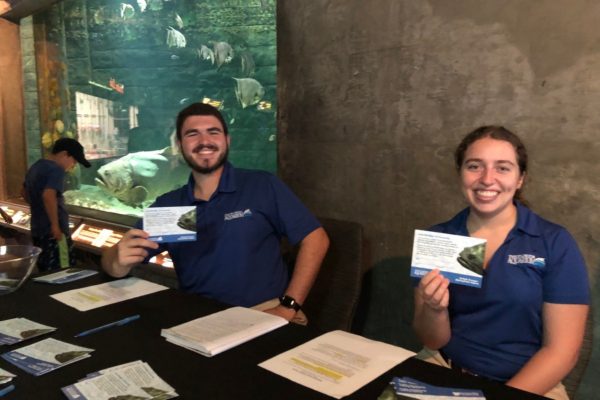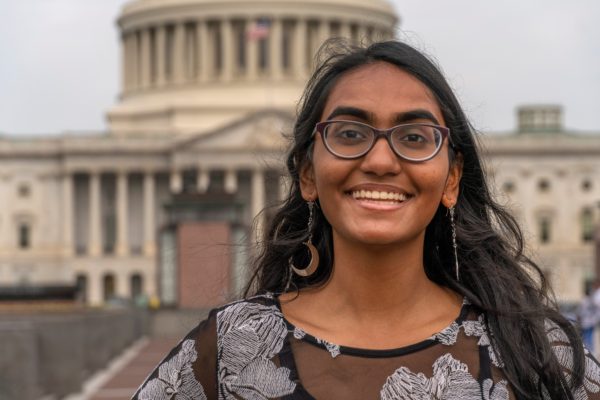For years, the conservation community has worked to deliver credible, relevant messaging that resonates on emotional and intellectual levels with the American public. We ocean advocates have tried many of the usual routes: workshops, email campaigns, exhibits at aquariums, public service announcements, etc…but, as a whole, we’ve generally been unable to quantify specific, lasting outcomes (i.e. “move the needle”) in a documentable, data-supported manner.
For the past 18 months, The Ocean Project has been working to develop an ocean awareness campaign that would achieve a meaningful, measurable impact. We piloted an online campaign designed to elevate awareness about ocean-related issues in the Houston, TX market during Spring 2011. This campaign marked one of the first examples of a nonprofit organization deploying a significant “paid media” (i.e. advertising) strategy to deliver unbranded, purely mission-related messaging. (In other words, the campaign did not rely on the kindness of media outlets or other benefactors for “free” advertising. Instead, this campaign sought to identify specific market members with the propensity to act in the interest of the ocean, and then deliver customizable messaging tailored specifically to this audience.)
The campaign’s goal was simple: to raise awareness of plastics pollution and its impacts on sea turtles. Our hope was that plastics pollution would serve as a portal to greater sensitivity and concern for broader ocean issues.
One full year after launching the campaign, awareness-related metrics remain significantly elevated when compared to the “baseline” condition. This compellingly indicates the campaign’s long-term effectiveness in influencing perceptions of ocean health. As a result of this pilot campaign, we believe that we have developed an effective and efficient method for identifying, targeting, reaching and influencing audiences regarding ocean health. Moreover, there may be an opportunity to scale this effort to create an effective global strategy to gain the support of a broad and diverse group of would-be ocean advocates.
The Campaign: Who, Why, What, Where, and How
Why: Prior to the launch of the campaign, The Ocean Project developed significant market research indicating that teens, tweens, and young adults are the greatest household influencers in terms of conservation and environmental practices. Therefore, we believed that communicating to this audience would, in turn, influence entire households.
What: After conducting a workshop with partners including the Monterey Bay Aquarium, National Aquarium, California Academy of Sciences, Tennessee Aquarium and Texas State Aquarium, we selected plastics pollution as the campaign focus because our research indicates that of the issues challenging ocean health, pollution is the most concerning to the American public. We chose a sea turtle for the ads because it is a charismatic animal that helps visually and emotionally communicate the threats of plastics pollution.
Where: We chose Houston as the geographic universe for the pilot campaign because it has the lowest median age of any major US city (32.9 years old), and it is not generally known for its progressive conservation attitudes. We did not want to “stack the deck” by deploying the campaign in a market that we know to possess generally sympathetic conservation attitudes (e.g. Portland, Seattle, San Francisco). For us to truly test the effectiveness of this initiative, we needed to avoid the “low hanging fruit.”
How: We developed an online campaign using targeted ads on social media channels (e.g. Facebook) and search engines (e.g. Google) because we believed this tactic to be the best method of effectively delivering the requisite number of impressions with the optimal frequency to the targeted audience within our budget. The medium also allowed the campaign to reach the target audience through their preferred communication channel at their preferred hours of engagement, therefore increasing the likelihood of successfully connecting with them.
Below are examples of some of the simple, straightforward ads that we delivered on Facebook during the pilot campaign:
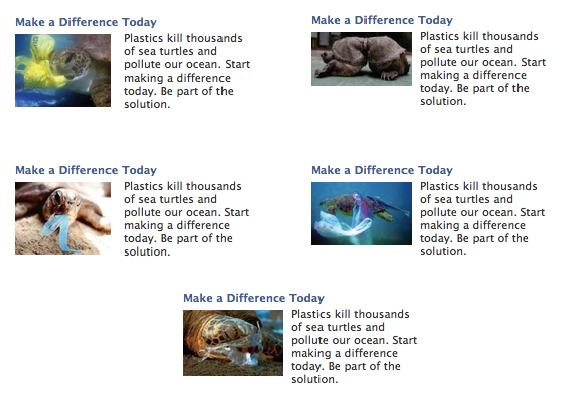
In the eight-week duration of the campaign, we delivered a total of 73.6 million impressions on social media channels, and 51.6 million impressions through search engines. The costs to deliver these impressions totaled $274,045 – the funding for which was provided entirely by a third-party donor.
One year later, data indicates that the campaign succeeded in altering perceptions of ocean health.
Late last week, we received research indicating the perceptions of the Houston, TX audience one-year after the campaign’s launch. We reported on the campaign’s original findings in December, and celebrated the ability of the campaign to influence short-term attitudes and opinions. This accomplishment, in and of itself, was remarkable.
One year later, we find the outcomes even more extraordinary. Click on the graphs below for an enlarged view of our findings:
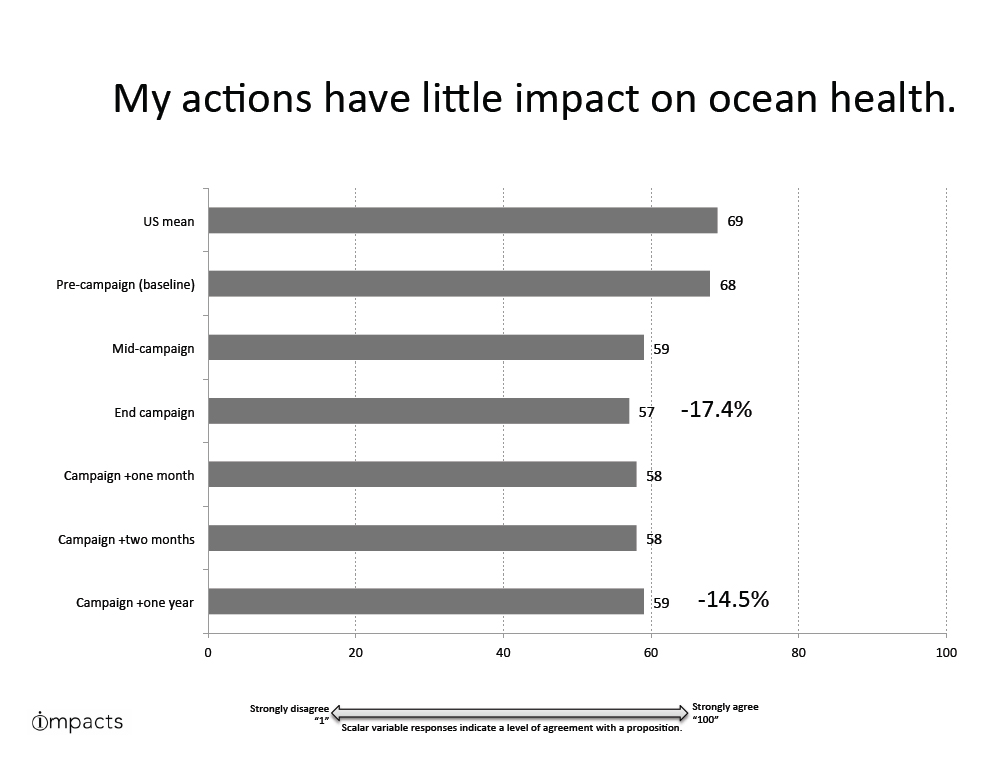
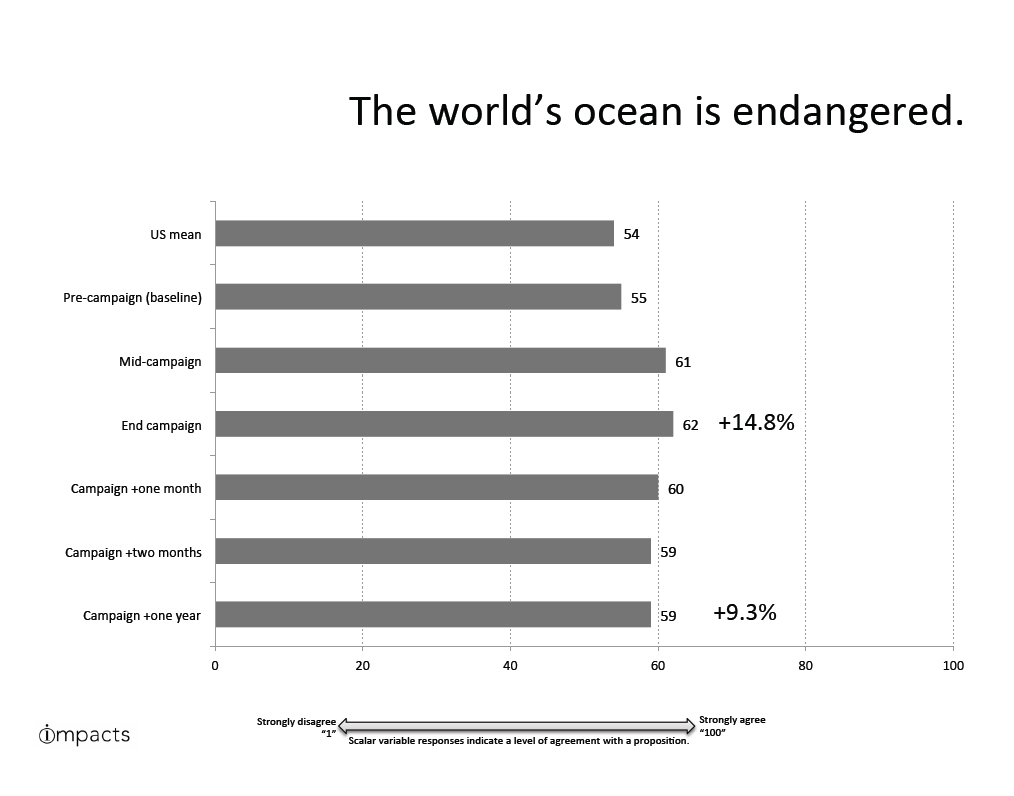
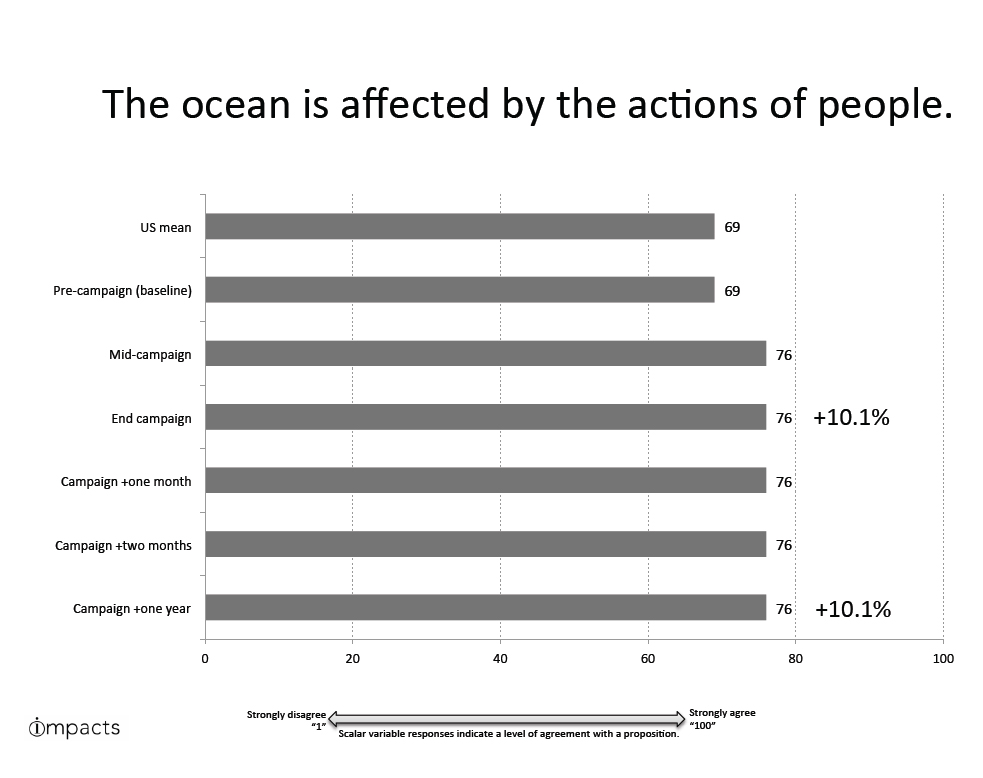
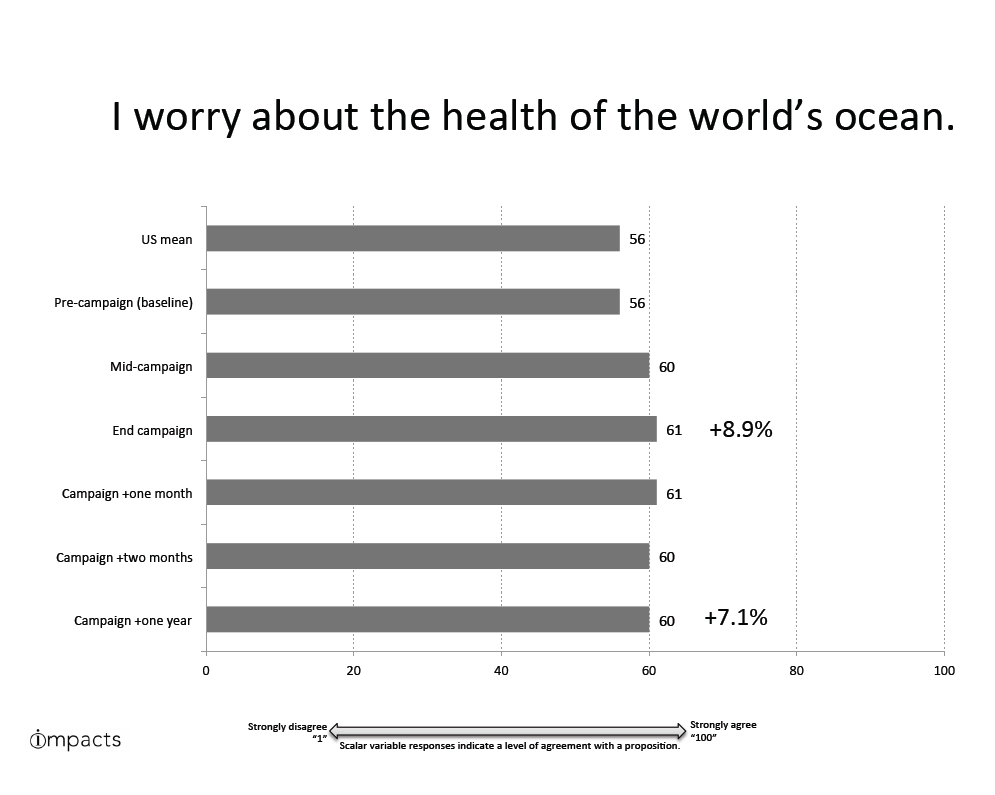
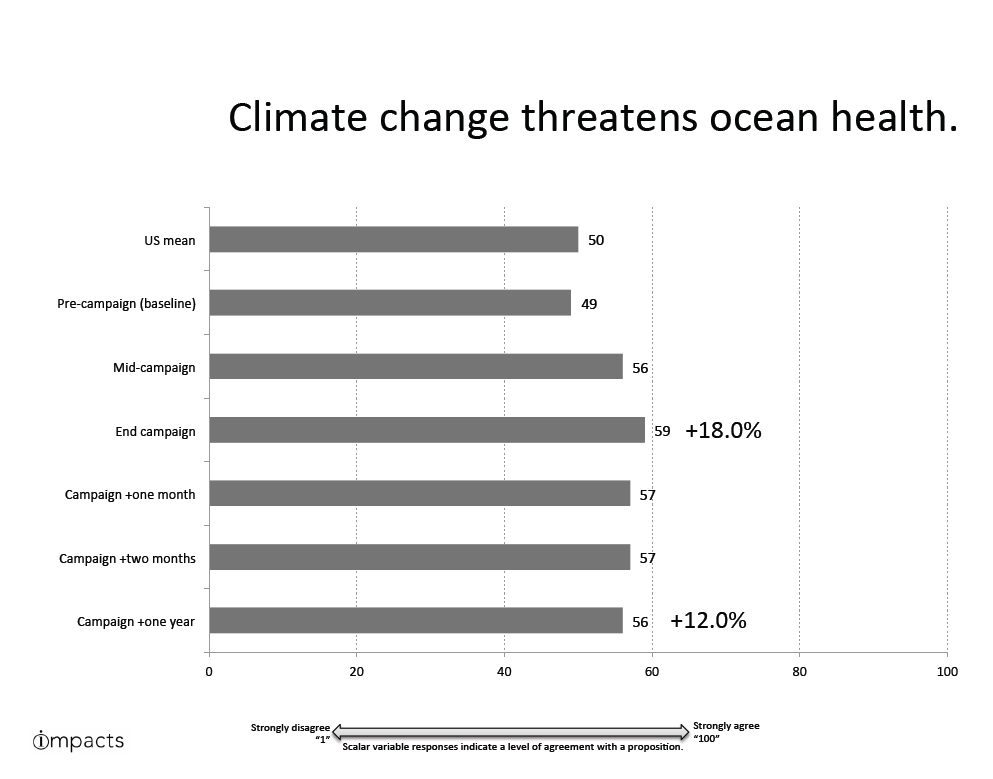
As indicated in the data above, the attitudes and opinions of the targeted audience generally remained at their elevated (i.e. more sympathetic to ocean health) levels a full year after the campaign’s launch. This is notable because we typically see an increase in awareness corresponding with the run of the campaign (in advertising terms, “lift”) that quickly dissipates once the campaign ends. However, the outcomes of the Houston pilot achieved a lasting impact on the perceptions and beliefs of young adults long after the campaign ceased.
We’re beyond excited about the outcomes of this pilot campaign and the opportunity to expand this effort on a national scale. We believe that we may be on the verge of making a significant breakthrough in influencing attitudes about the long-term health and conservation of the world’s ocean.
Houston, we just may have a solution!

